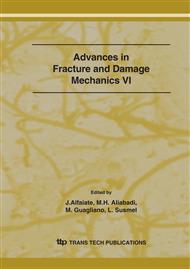p.681
p.685
p.689
p.693
p.697
p.701
p.705
p.709
p.713
Crack Identification in Gear Tooth Root Using Adaptive Analysis
Abstract:
Problems concerning gear unit operation can result from various typical damages and faults. A crack in the tooth root, which often leads to failure in gear unit operation, is the most undesirable damage caused to gear units. This article deals with fault analyses of gear units with real damages. A laboratory test plant has been prepared; it has been possible to identify certain damages by monitoring vibrations. In concern to a fatigue crack in the tooth root significant changes in tooth stiffness are more expressed. When other faults are present, however, other dynamic parameters prevail. Signal analysis has been performed also in concern to a non-stationary signal, using the adaptive transformation for signal analysis.
Info:
Periodical:
Pages:
697-700
Citation:
Online since:
September 2007
Authors:
Keywords:
Price:
Сopyright:
© 2007 Trans Tech Publications Ltd. All Rights Reserved
Share:
Citation:


